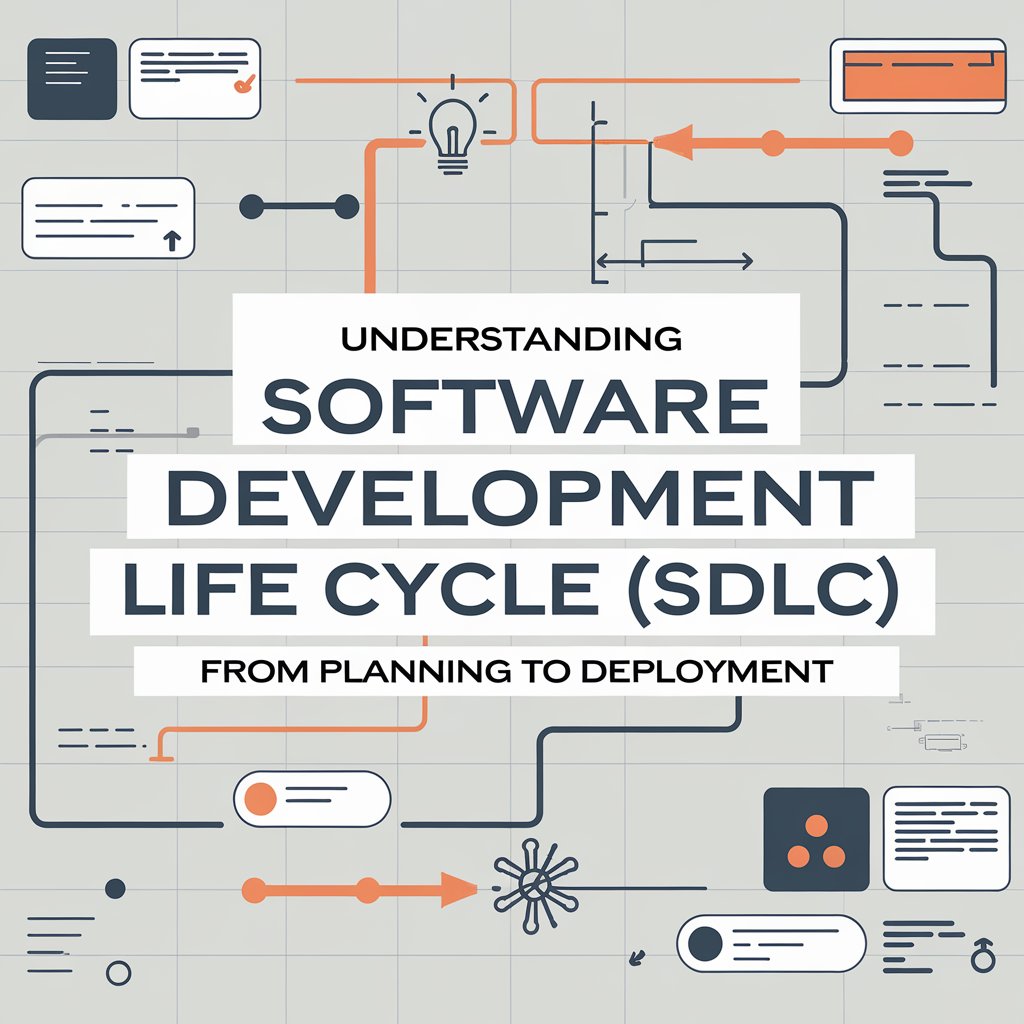The Software Development Life Cycle (SDLC) is a structured process that ensures quality and correctness in software development. It describes the phases through which software passes from conception to deployment and maintenance. Each phase has specific objectives, deliverables, and key activities. Here’s an overview of the typical stages in the SDLC:
1. Planning and Requirement Analysis
- Goal: Understand what the client or user needs.
- Activities: Involves gathering business requirements, discussing the project’s goals, conducting feasibility studies, risk assessments, and budgeting.
- Deliverables: Project charter, high-level requirements, feasibility analysis, and project plan.
2. System Design
- Goal: Create the architecture and design of the software system based on the requirements.
- Activities: Engineers define the system’s architecture, components, data flow, interfaces, and technologies.
- Deliverables: Design documents, including high-level design (HLD) and low-level design (LLD), data models, and system architecture diagrams.
3. Implementation or Development
- Goal: Develop the actual code based on the design.
- Activities: Programmers write the source code, following the design documents and coding standards.
- Deliverables: Functional software components or modules, with clean, documented code.
4. Testing
- Goal: Ensure the software works as expected and is free of defects.
- Activities: Testing teams perform various tests, such as unit testing, integration testing, system testing, and user acceptance testing (UAT).
- Deliverables: Test plans, test cases, and a bug report if any issues are found.
5. Deployment
- Goal: Deliver the software to the user for actual use.
- Activities: Deployment can occur in stages, including pre-production, user training, and the final go-live process where the software is installed in the production environment.
- Deliverables: Released software, deployment documentation, and a user manual.
6. Maintenance and Operations
- Goal: Keep the system running smoothly, ensuring it adapts to changes and continues to function efficiently.
- Activities: Bug fixes, software updates, performance monitoring, and enhancement of existing features.
- Deliverables: Maintenance reports, patch updates, and performance analysis.
SDLC Models
There are various SDLC models, which dictate how these phases are executed:
- Waterfall Model: Phases are completed sequentially.
- Agile Model: Phases are iterative, with continuous feedback and development cycles (sprints).
- Iterative Model: Development progresses through repeated cycles or iterations.
- V-Model: Similar to Waterfall but with testing integrated into each phase.
- DevOps Model: Focuses on continuous integration, testing, and delivery, combining development and operations teams.
Key Takeaways:
- SDLC provides a clear framework to manage the development process and ensure timely delivery of a quality product.
- Each phase has distinct goals, responsibilities, and deliverables.
- Different SDLC models offer flexibility based on project needs and timelines.
Would you like more details on a specific SDLC model or any particular phase?
FAQs on Software Development Life Cycle (SDLC)
1. What is the main purpose of the SDLC?
- The SDLC ensures a structured and methodical approach to software development. Its main purpose is to deliver high-quality software that meets customer requirements, is completed within budget, and is delivered on time.
2. Which SDLC model is best?
- There’s no one-size-fits-all model. The choice depends on the project type, complexity, and team requirements. For example, the Waterfall model is suitable for projects with well-defined requirements, while Agile works best for projects requiring flexibility and frequent updates.
3. What are the roles involved in the SDLC?
- Various roles include business analysts (for requirement gathering), software architects and developers (for design and implementation), quality assurance engineers (for testing), and project managers (for overall management). Operations teams play a key role in deployment and maintenance, especially in models like DevOps.
4. What happens if requirements change during the SDLC?
- Models like Agile and Iterative are more suited for handling changing requirements because they incorporate feedback loops and allow for changes even after development has started. In rigid models like Waterfall, accommodating changes is harder and often leads to project delays or increased costs.
5. How long does a typical SDLC cycle last?
- The duration depends on the complexity of the project. In traditional models like Waterfall, the cycle could last several months to years. In Agile models, the cycle can be broken into smaller iterations or sprints, each lasting 2-4 weeks.
6. What is the role of testing in SDLC?
- Testing is essential in the SDLC to ensure that the software functions correctly and meets the specified requirements. Testing helps in detecting bugs early, reducing the risk of major issues during the deployment phase.
7. What is the importance of the maintenance phase?
- Maintenance is crucial to ensure the software continues to function smoothly over time, adapting to new technologies, fixing bugs, and improving performance. It keeps the software relevant and useful for the users.
8. What is the difference between SDLC and Agile?
- SDLC is a broader framework that defines different phases in software development. Agile is a specific SDLC model that emphasizes flexibility, customer collaboration, and iterative development. In Agile, the software is developed in small increments with continuous user feedback.
Conclusion
The Software Development Life Cycle (SDLC) is a systematic approach that guides the development of software from the initial planning phase through to deployment and ongoing maintenance. It ensures that developers can follow a structured process to deliver high-quality software that meets the client’s needs. By following the SDLC, teams can better manage project costs, timelines, and risks, while ensuring that the product is well-tested and reliable.
Selecting the right SDLC model is critical and should align with the project’s needs, timeline, and available resources. Agile models offer flexibility and iterative development, while traditional models like Waterfall provide a clear, linear progression through each phase. Regardless of the model chosen, SDLC helps teams maintain focus and ensures quality control throughout the development journey.
In conclusion, the SDLC is fundamental to building reliable software products, making it a crucial concept for both developers and project managers.
